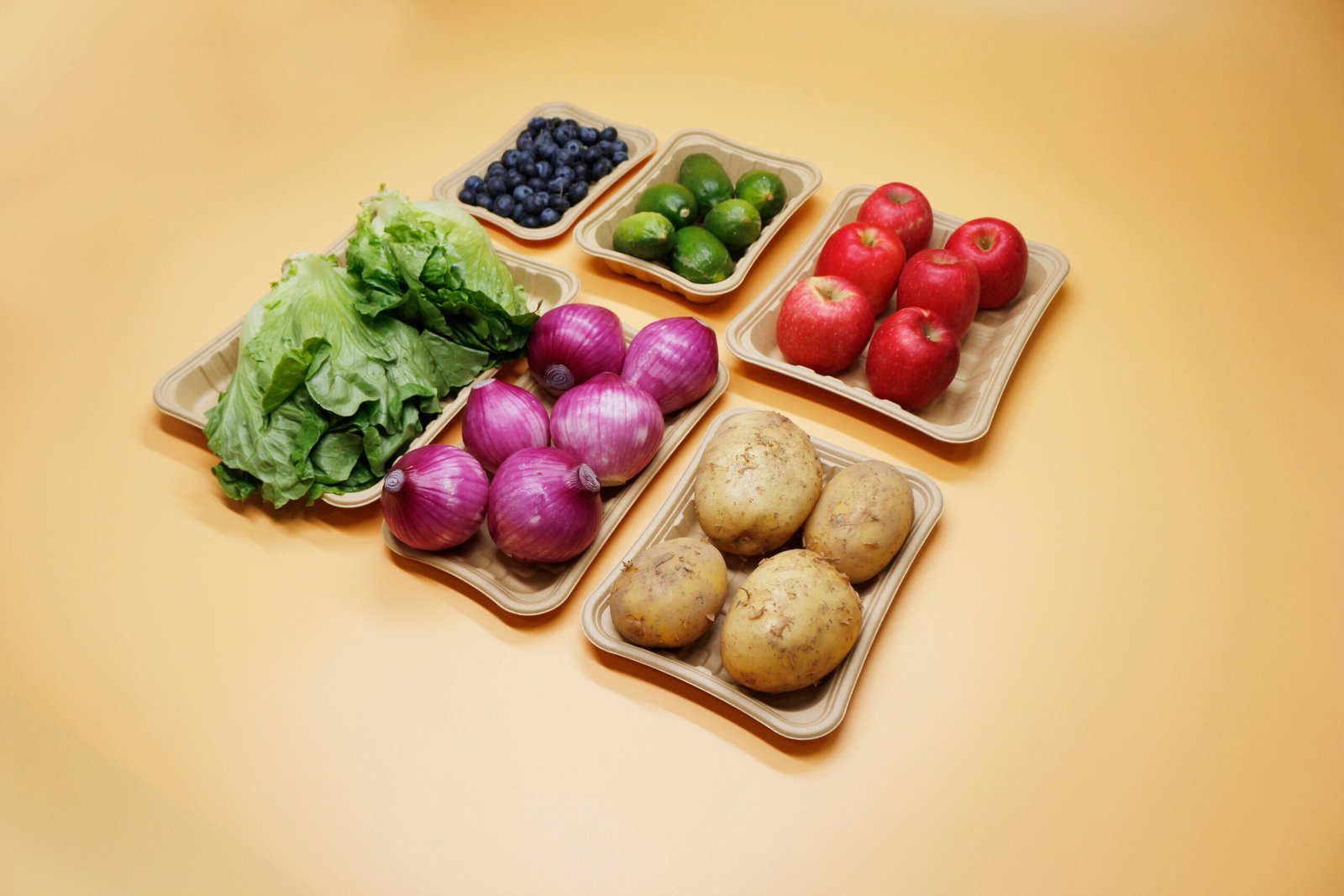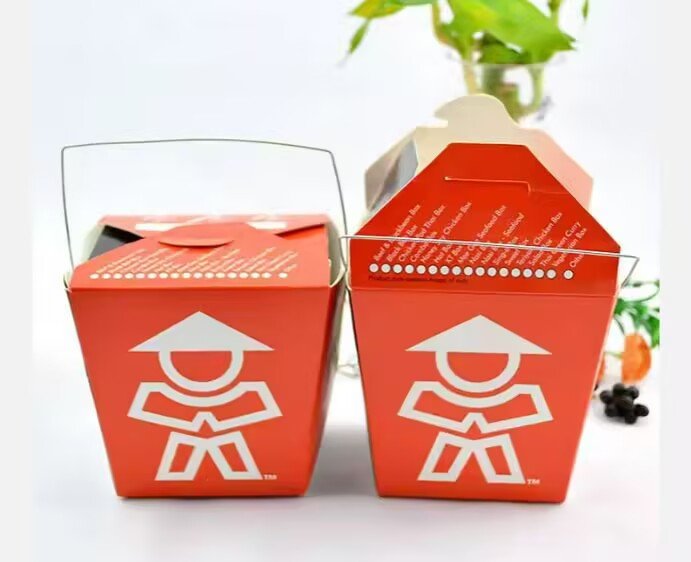European supermarket plastic ban and solutions by 2025(5)
Ganyuan
2025 年 5 月 6 日

Introduction: When paper meets cold chain —— a silent green revolution
Globally, about 150 million tons of plastic packaging waste end up in the natural environment each year, with cold chain transportation accounting for over 20% of this volume. While polystyrene foam boxes can withstand temperatures as low as-30℃, their “endurance” of a thousand years has turned them into a nightmare for ecosystems. In this context, **paper packaging containers**, endowed with the “triple genes” of being renewable, recyclable, and biodegradable, are transforming from a minor player in the transportation of ordinary goods to a key driver in the cold chain sector. From Northern European salmon to equatorial tropical fruits, from vaccine reagents to high-end cosmetics, paper-based materials are breaking performance boundaries through technological empowerment, quietly reshaping the rules of cold chain packaging.
1. Performance breakthrough of paper packaging containers: the evolution from "fragile" to "strong"
In the traditional cognition, paper containers are often associated with “easily wet” and “easily damaged”, but in the cold chain scenario, the new generation of paper packaging has achieved three technological leaps:
1. Structural reinforcement: through honeycomb sandwich design, high density corrugated pressing and other processes, the compressive strength is increased to more than 300kPa, comparable to EPS foam box (such as FibreForm® technology of Swedish BillerudKorsnas);
2. Temperature control optimization: composite phase change material (PCM) or aerogel coating, so that the temperature fluctuation of the carton in the environment of-25℃ to 40℃ is less than ±2℃ for 72 hours (real measured data of SIG Combibloc cold chain carton in Germany);
3. Waterproof and moisture-proof: food grade silicone coating or bio-based hydrophobic membrane technology, which enables the paper container to maintain structural integrity in an environment of 90% humidity (patented by Rengo Company, Japan).
2.Global competitiveness: "low carbon premium" of paper containers and policy wind
The rise of paper packaging containers in the foreign trade market is due to three driving forces:
-Policy forced substitution: The EU Single-use Plastic Directive (SUP) clearly requires the elimination of all non-recyclable cold chain packaging by 2030, and paper-based materials become the compliance requirement;
-Carbon tariff forcing: The EU’s Carbon Border Adjustment Mechanism (CBAM) includes packaging in the accounting scope. The full life cycle carbon footprint of paper containers is only 1/3 of that of plastic, which can save enterprises 15%-20% of cross-border costs;
-Brand value empowerment: 76% of consumers around the world are willing to pay a premium of 5%-10% for products with environmentally friendly packaging. The natural “green texture” of paper containers has become a powerful tool for high-end brands to differentiate themselves.

3.deep water technology: solve the "impossible triangle" of paper containers
Despite the promising prospects, there are three major challenges to the large-scale adoption of paper packaging containers in cold chain applications:
1. Extreme temperature stability: prolonged ultra-low temperature (such as-40℃ vaccine transportation) may lead to paper fiber brittleness;
2. Cost sensitivity: the unit price of high-performance paper containers is 20%-30% higher than that of traditional foam boxes, and the acceptance of small and medium-sized exporters is limited;
3. Fracture of recycling system **: Only 34% of paper packaging is effectively recycled globally, and mixed material composite structure (such as PCM+ paper base) increases the difficulty of sorting.
Industry innovators are breaking the game with a diversified strategy:
-Material hybridization: Canadian Kruger company combined bamboo fiber with pulp to increase the crack resistance of the container by 50% at-50℃;
-Lightweight design: The Italian Pro-Gest Group reduces the thickness of cardboard by 30% through micro-porous foaming technology while maintaining the strength, and reduces the transportation cost of a single box by 12%;
-Closed-loop alliance: Unilever has partnered with global recycler Terracycle to set up dedicated paper container recycling points in 12 countries, increasing the recycling rate to 68% through a “deposit return system”.
4.Future landscape: from packaging revolution to supply chain ecology reconstruction
The ultimate goal of paper packaging containers is not only to replace plastic, but also to promote the transformation of the cold chain system to “zero waste cycle”. The future trend will focus on three directions:
1. Intelligent integration: Boxes embedded with iot sensors can monitor temperature and humidity in real time, and enhance supply chain transparency through blockchain traceability (Danone group pilot project shows a 25% reduction in cargo damage claims);
2. Modular reuse: The paper container with foldable design supports 5-8 cycles of use, and enters the recycling chain after decommissioning, increasing the carbon emission reduction of life cycle by 300%;
3. Bio-based coating revolution: from corn starch to chitosan, breakthroughs in natural waterproof coatings will completely eliminate plastic coatings and achieve 100% compostable.
It is worth noting that the application scenarios of paper containers are expanding from shipping boxes to the whole chain:
-Cold chain pallet: the paper-based pallet developed by DS Smith in Germany can carry up to 800kg and can be completely recycled;
-Buffer material: the mycelium pulp molding of Ecovative in the United States replaces plastic bubble film, which is naturally degraded after water absorption;
-Smart labels: Stora Enso of Finland has introduced an e-ink paper label that can print temperature control data repeatedly and reduce the waste of paper documents.
5. The role of Chinese manufacturing: from "following" to "defining standards"
As the world’s largest pulp importer and paper production capacity country, China has unique advantages in the paper packaging container track:
-Production capacity advantage: In 2023, China’s paper packaging production capacity accounts for 42% of the world, and large-scale production can reduce the cost to 80% of the international average price;
-Technical reserves: Jiulong Paper, Shan Ying International and other enterprises have overcome the nanocellulose reinforcement technology, and the performance of paper containers is comparable to international competitors;
-Policy dividend: Under the “double carbon” target, local governments can subsidize environmental packaging projects up to 30% of the investment.
However, the challenges cannot be ignored:
-Raw material dependence: 85% of China’s papermaking fibers depend on imported waste paper or wood pulp, and local alternatives such as bamboo pulp and straw need to be accelerated;
-Certification barriers: The European and American markets require paper containers to pass FSC, PEFC forest certification and FDA food contact safety certification at the same time, and the compliance cost of small and medium-sized enterprises is high;
-Brand recognition: International buyers still prefer Nordic companies such as Stora Enso, and Chinese brands need to break the bias through ESG narrative.
Conclusion:
From Cai Lun’s papermaking to smart temperature-controlled cardboard boxes, paper has spanned two millennia and once again stands at the center of a technological revolution. When a cardboard box printed with a carbon-neutral QR code carries Norwegian salmon across the equator, ultimately turning into spring soil in a composting plant in Tokyo, it completes not just a journey of goods but also a dialogue of civilization——Can humans use the simplest material (paper) to balance the most complex needs (cold chain)?


